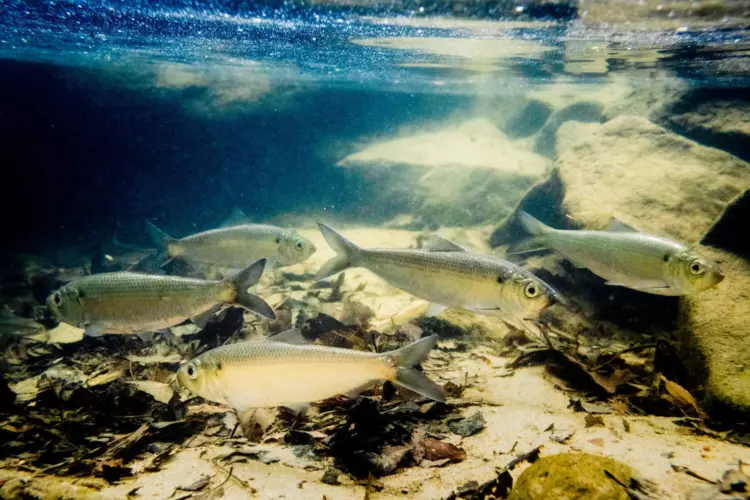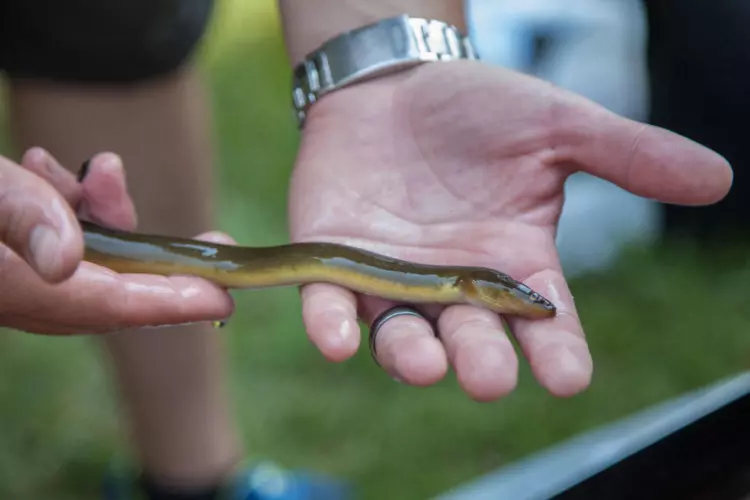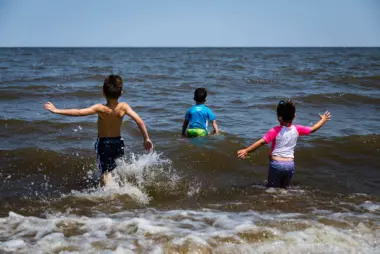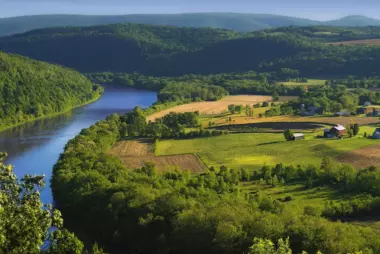Clean Water for the Economy
Local economies thrive when the environment around them is healthy. Maintaining environmental protections can support clean water, healthy habitats and biodiversity. This module explains how maintaining environmental protections can also benefit businesses and valuable sectors of the economy, from commercial fishing and agriculture to boating and tourism.
Preview presentation and download files
Downloads
Presentations and Fact Sheets
Presentation Assets
Video for Clean Water for the Economy
In this topic you will learn
-
How is clean water connected to my local workforce and community?
-
How does my local economy benefit from a healthy ecosystem?
Downloads
Presentations and Fact Sheets
Presentation Assets
Highlights
Education
Interpretive outdoor experiences and environmental education are more impactful and have a higher return of investment when learners have access to a hands-on, outdoor learning environment.
Economic Development
In 2014, the Chesapeake region was estimated to provide at least $107.2 billion in natural benefits each year. Some of the most economically valuable sectors of the Chesapeake Bay watershed—including commercial fishing, recreational fishing, hunting, tourism, boating and agriculture—depend on clean water, open land and a healthy ecosystem. For example, small and independent craft brewers, who depend on the safety and reliability of clean water to craft their beers, contributed $82.9 billion and 580,000 jobs to the U.S. economy in 2019. Today, more than 100 breweries have joined the Natural Resources Defense Council’s Brewers for Clean Water.
Public Health and Safety
Disease-causing bacteria and harmful algal blooms caused by excess nutrients can make people sick if they play in, on or near the water, or if they consume fish and shellfish harvested from polluted waters. Reducing these risks has the potential to lower overall health care costs.
Infrastructure Maintenance and Finance
Living shorelines use vegetation and other natural elements to manage or stabilize shorelines. Living shorelines cost less than bulkheads, seawalls and other hardened shorelines, and bring benefits such as reduced erosion, improved water quality, shoreline access for wildlife and visual appeal. Living shorelines also support economically valuable fisheries like blue crabs and menhaden.
Case Studies You'll Find Inside
Turkey Hill Dairy
PennsylvaniaPartnership Improves Stream Health
In 2018, Turkey Hill Dairy formed a Clean Water Partnership with the Alliance for the Chesapeake Bay and the Maryland and Virginia Milk Producers Cooperative. Dairy farms that provide milk to Turkey Hill are now asked to establish conservation plans and implement on-the-ground practices that prevent nutrients and sediment from entering local waterways. In turn, these farms receive a premium for their milk. The partnership was made possible through funding from the U.S. Department of Agriculture’s Natural Resources Conservation Service and the National Fish and Wildlife Foundation.

Anthracite Outdoor Adventure Area
Shamokin, PennsylvaniaOutdoor Recreation on Reclaimed Mine Lands
The Anthracite Outdoor Adventure Area is located on 7,000 acres of reclaimed coal mines that had been vacant for decades. Like other projects of its kind, this mine reclamation project hired former mine operators to serve as construction contractors, who in turn employed former miners and other local workers. Tens of thousands of patrons pay to ride through the wilderness at the park each year, raising local and state tax dollars and filling restaurants and shops with customers.

Bloede Dam
Baltimore, MarylandDam Removal Supports Fish Passage and Recreation
The 2018 removal of Bloede Dam gave recreational fishing, canoeing and other water activities a chance to thrive in Patapsco Valley State Park. Public parks, especially those in urban areas, provide a place to gather, present an opportunity to fish for sustenance and recreation, encourage exercise and offer many other benefits to the community. In 2020, researchers at the Maryland Department of Natural Resources found white perch, shad, juvenile striped bass and river herring upstream of the old dam site.

Embrey Dam
Fredericksburg, VirginiaDam Removal Supports Fish Passage and Recreation
Scientists with the U.S. Geological Survey began to see a steady increase in the number of small eels upstream of Embrey Dam about two years after its 2004 removal. These scientists suggested that the removal of the dam is allowing eels to spread into new habitats, potentially improving their survival. The removal of the dam also means paddlers can float the Rappahannock River to its mouth, instead of having to take their boats out of the water at Fredericksburg, walk them around the dam and put them back in the water on the other side. The resulting change in water flow also increased fishing opportunities for smallmouth bass, revealed historic canal locks and created Class II+ rapids and other recreational opportunities, such as a jumping rock and swimming area.

Here's How You Can Help
Learn More About This Topic
Learn about the economic value of natural resources on a county scale.
Learn about the value of benefits gained by clean water.
Learn how the Clean Water Act helped revive the James and Appomattox rivers, allowing Hopewell, Virginia, to seek its own renewal.



